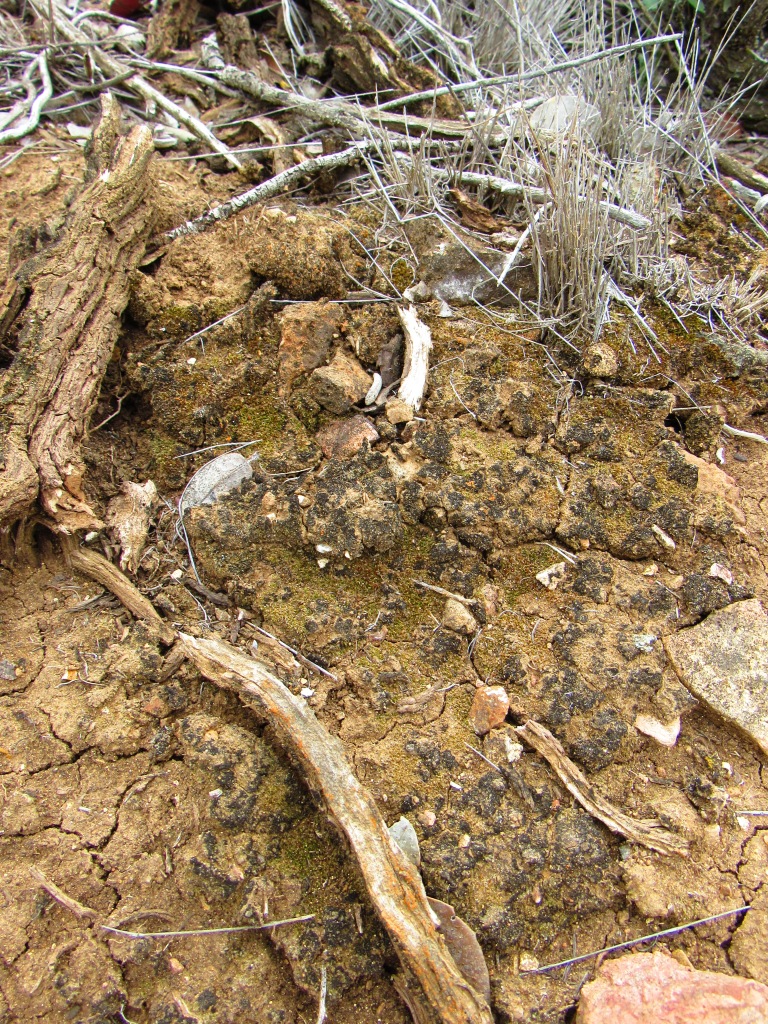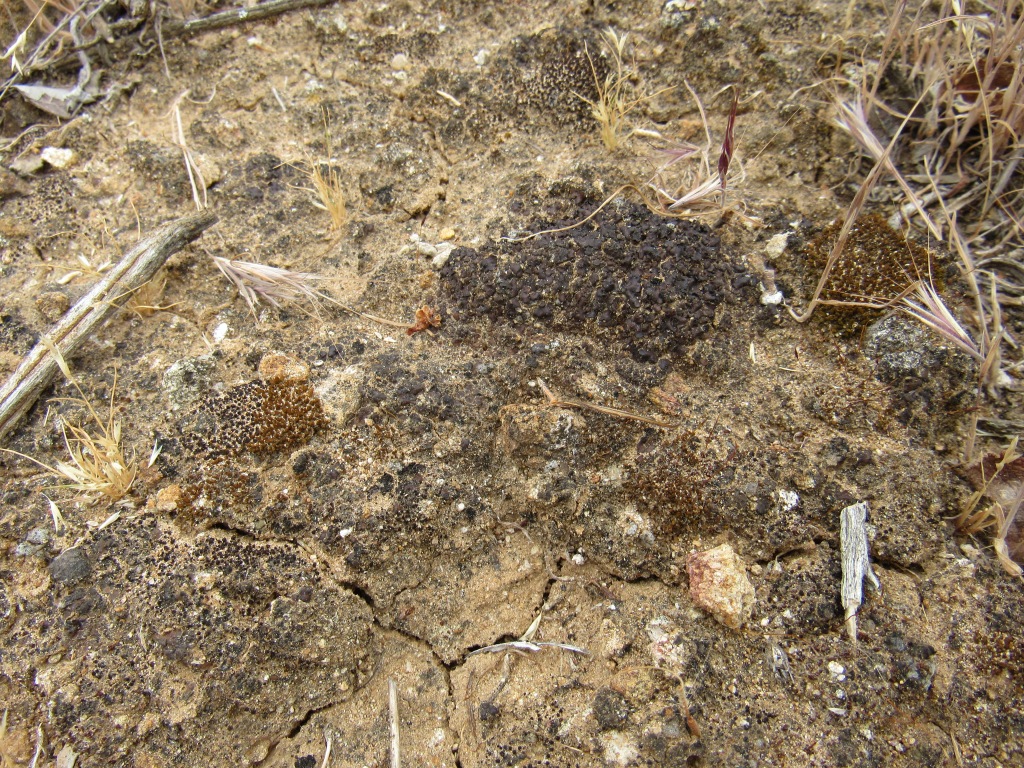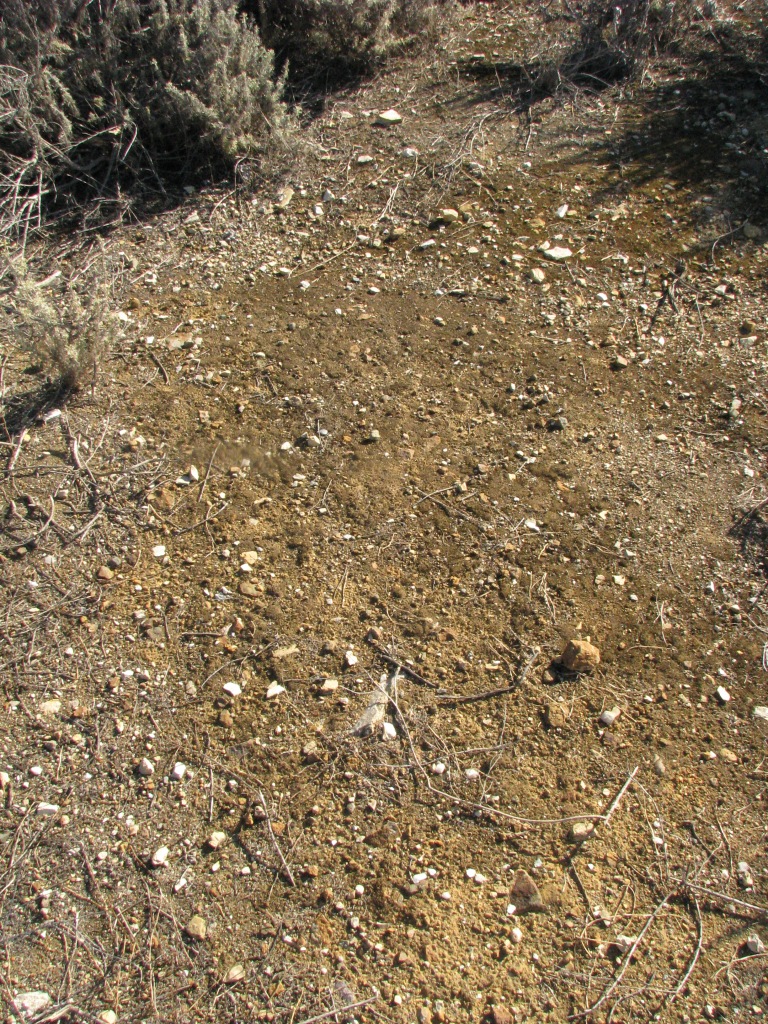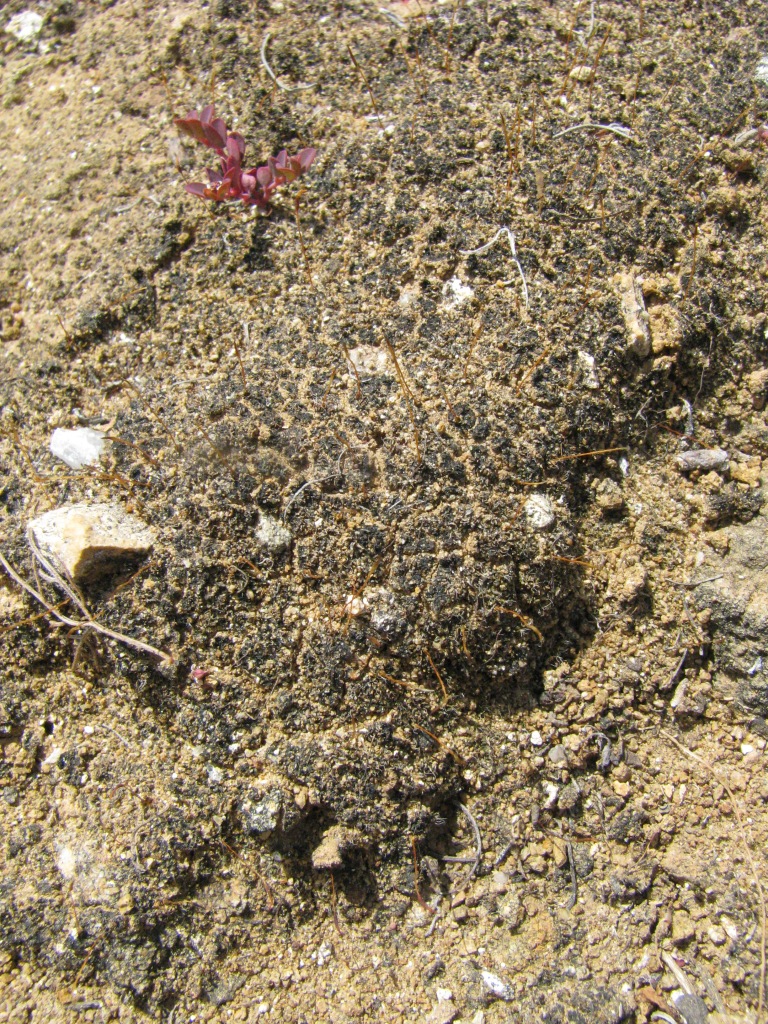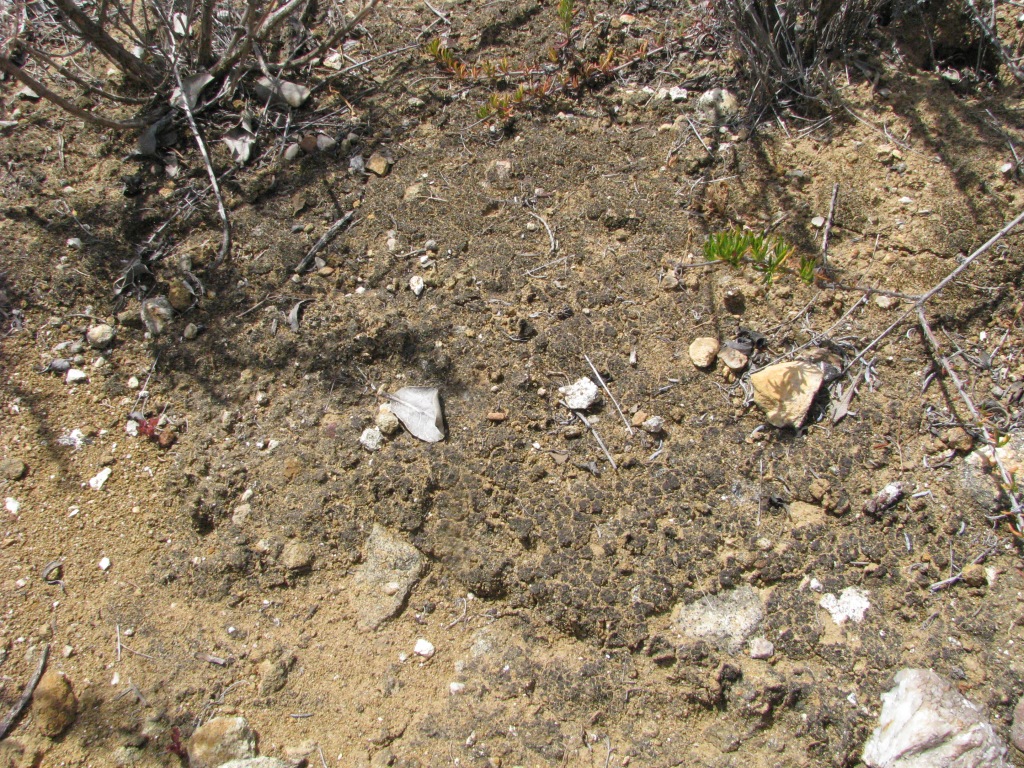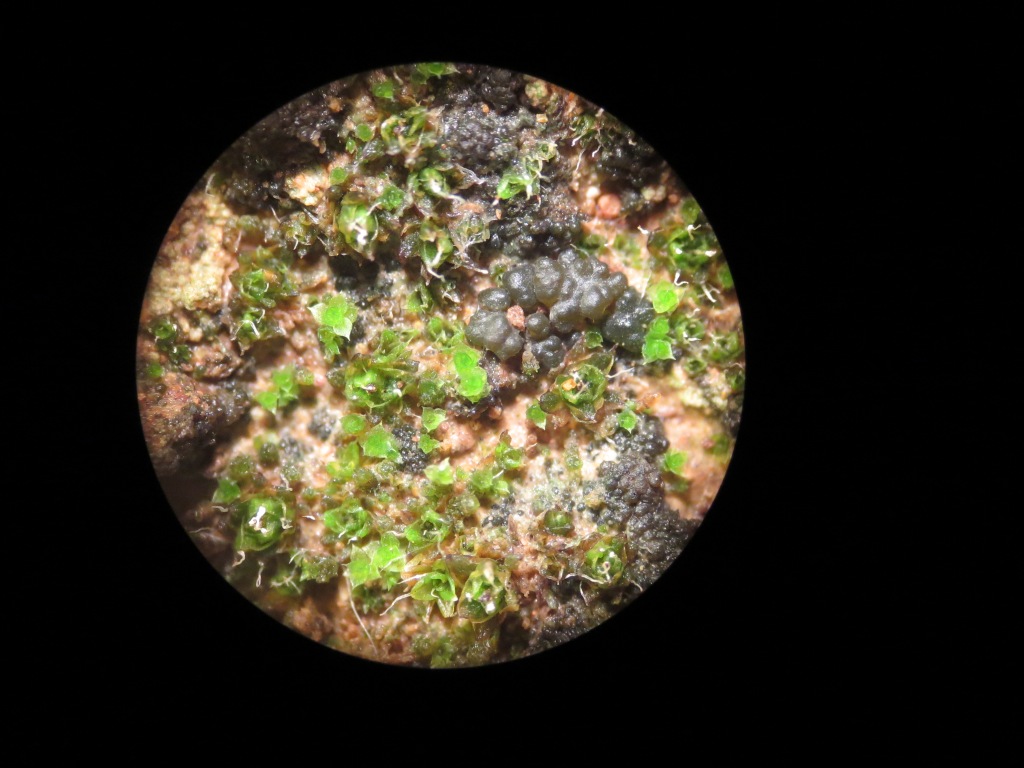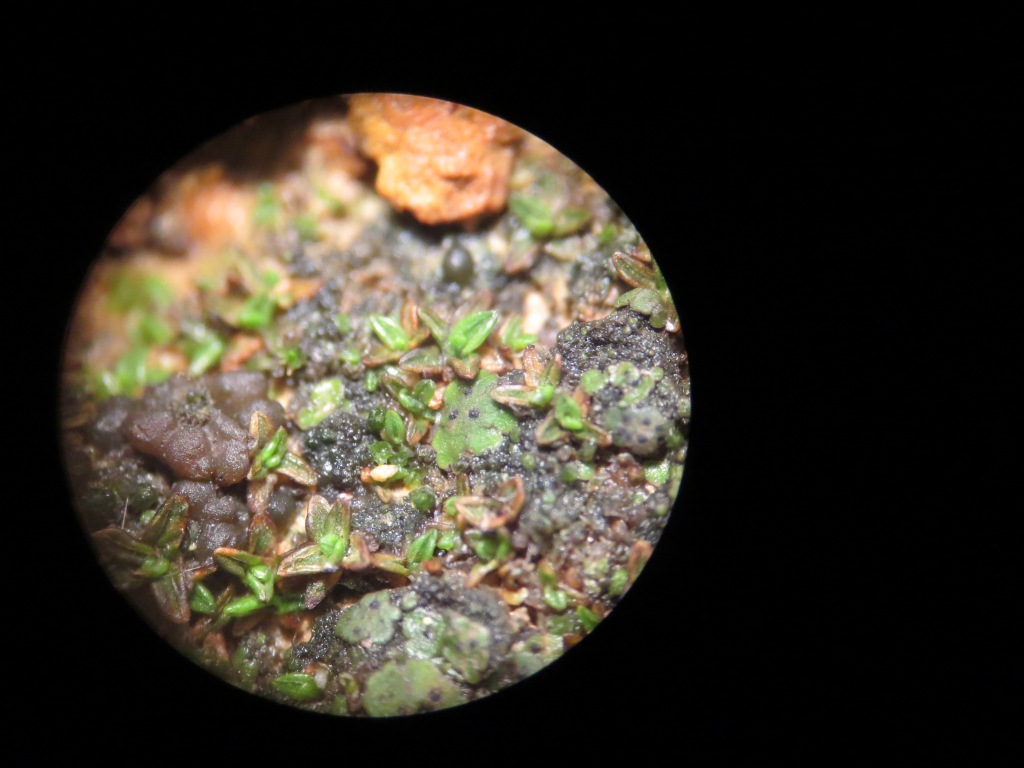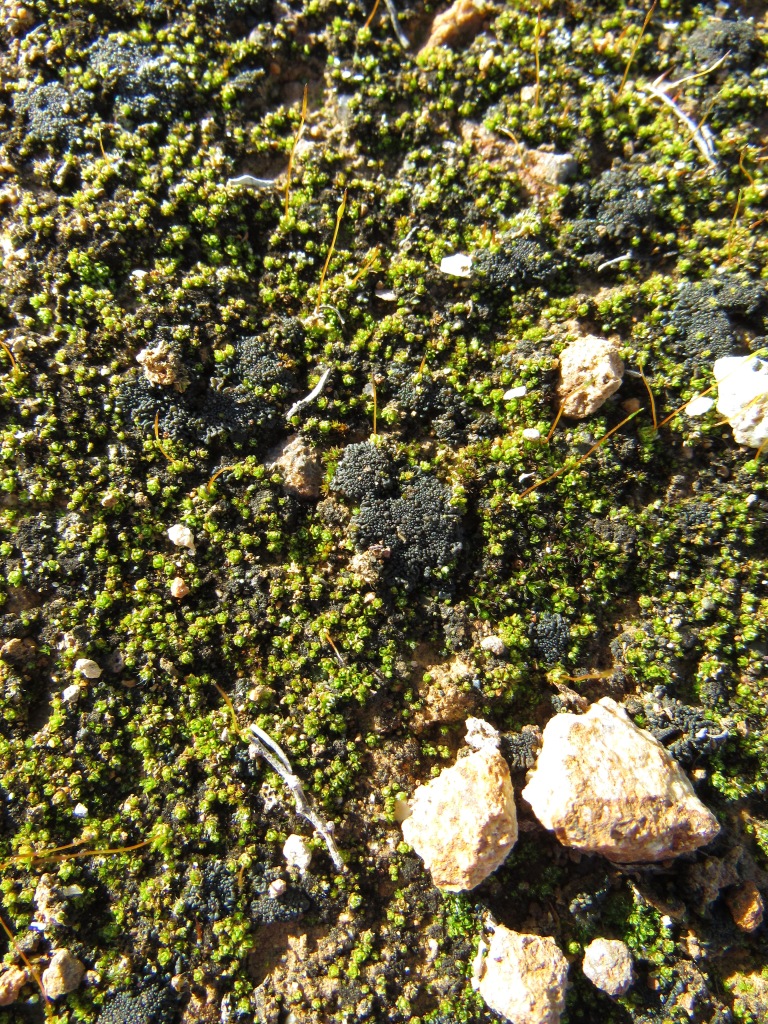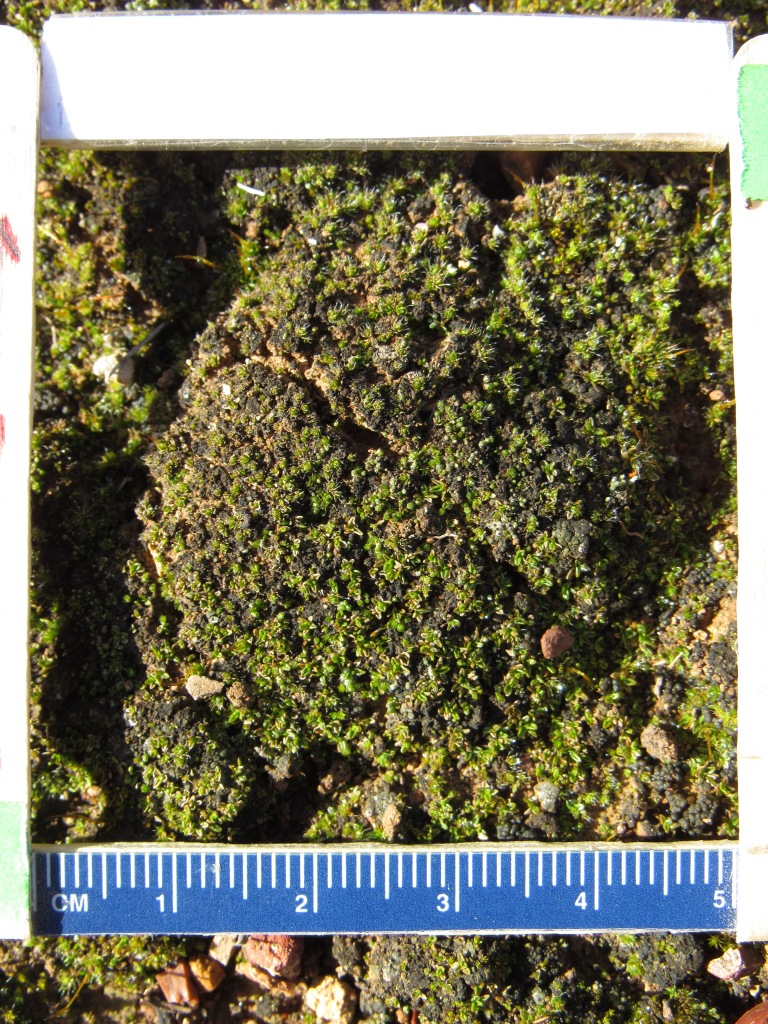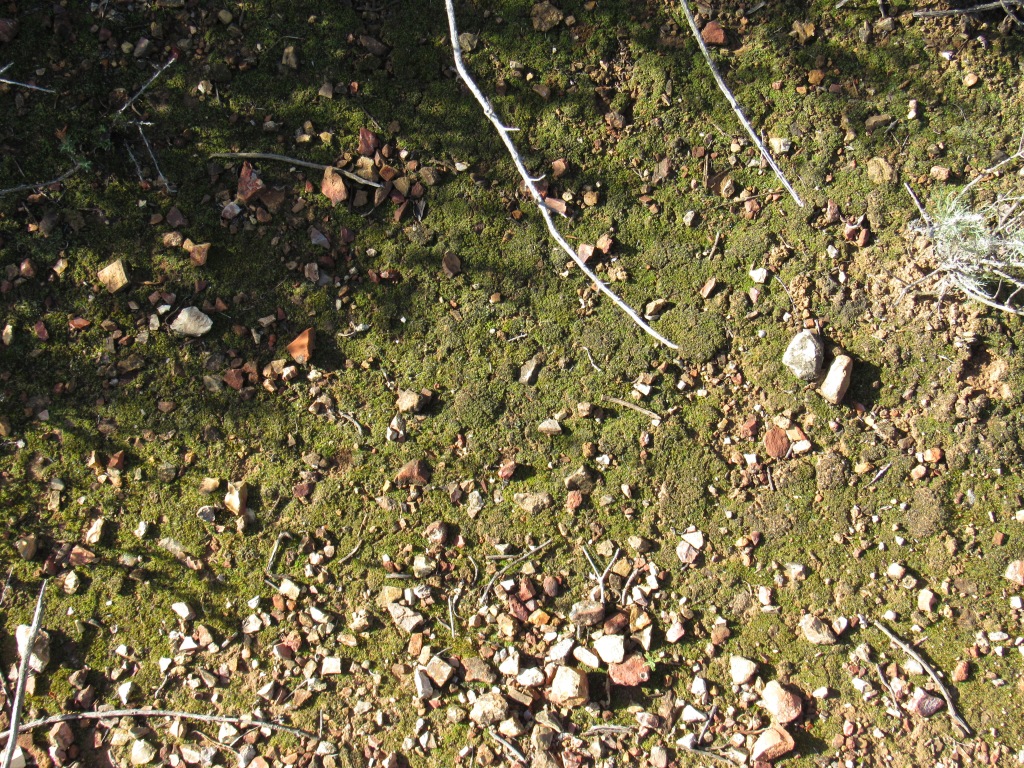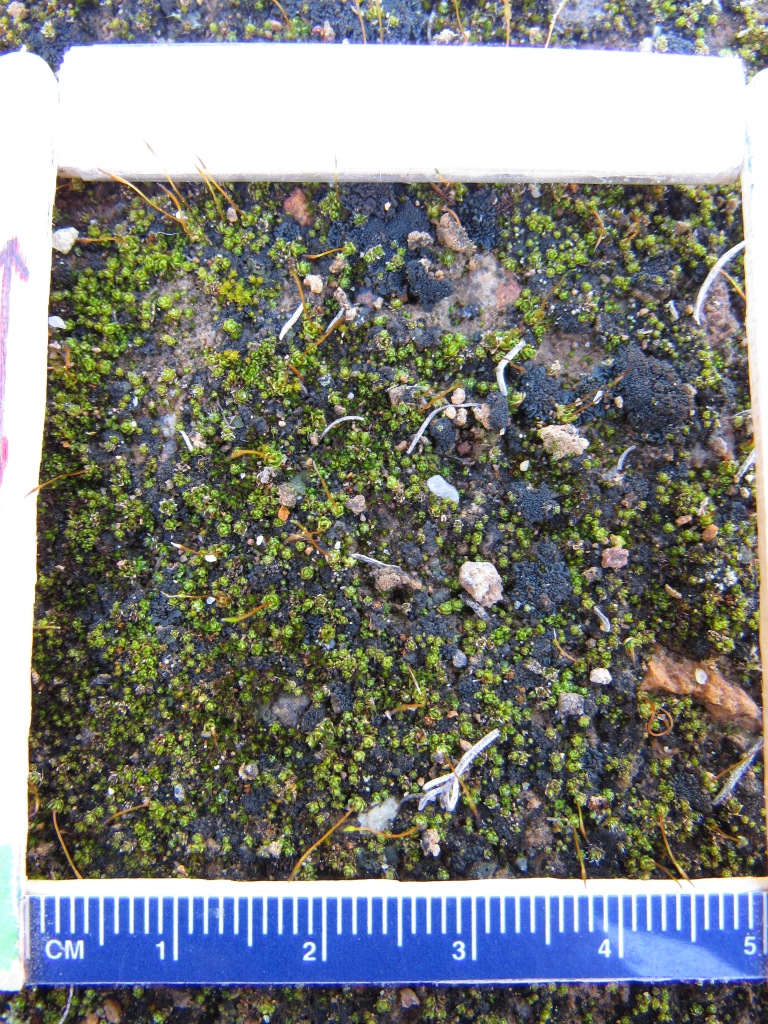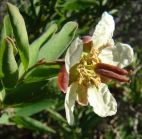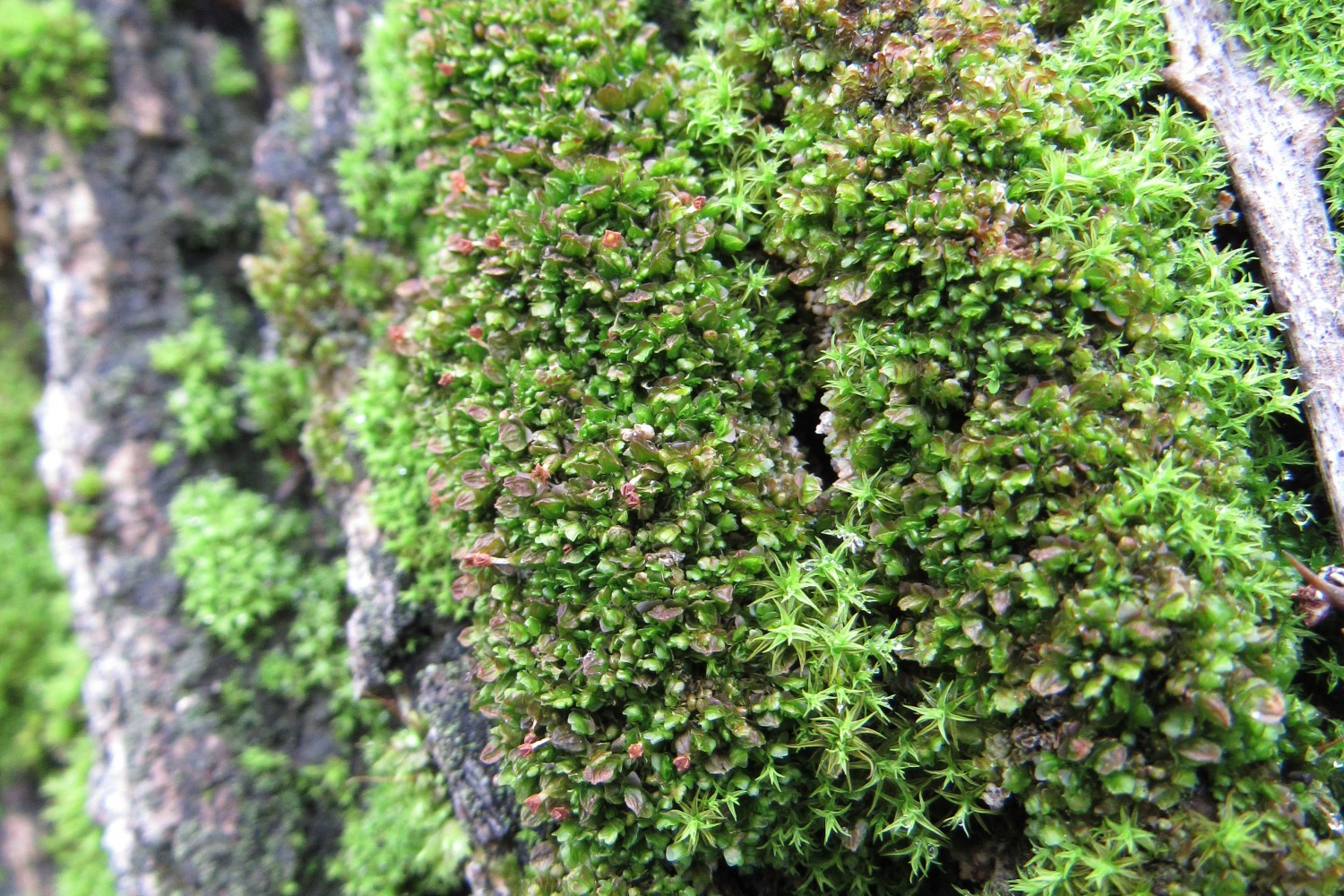Biological soil crusts (BSCs) are complex communities of organisms that inhabit the surface of soils worldwide. The organisms that comprise BSCs are archaea, bacteria, fungi, algae, lichens, and bryophytes. The combination of these organisms and their proportion in BSC varies with climate, soil, and disturbance. The organisms in BSCs help to bind and stabilize the uppermost portions of the soil. BSCs are commonly found in arid and semi-arid ecosystems and usually in spaces between vascular plants and under their canopy.
BSCs provide numerous ecosystem functions, such as helping to reduce soil erosion, increasing water absorption of the soil, increasing soil fertility through nitrogen and carbon fixation, potentially helping to prevent the spread of non-native vascular plants, and secreting compounds that increase the bio-availability of phosphorus in the soil. BSC organisms are active when water is available and become dormant when water is unavailable. BSCs can be found on most soil types. The soil composition of a given area often dictates which organisms are present within the BSC. The overall morphology of BSC is grouped into four categories: smooth, rugose, pinnacled, and rolling. Smooth BSC occurs in hot, arid deserts. Rugose BSC occurs in slightly less arid deserts. Pinnacled BSC occurs in mid-latitude cool deserts. Rolling BSC is present only where frost heaving occurs in the winter.
Biological Soil Crust on the Palos Verdes Peninsula (PVP):
Late successional BSC on the PVP appears to be dominated by cyanobacteria, lichens, and mosses. Late successional BSC on the PVP is often found in the spaces between vascular plants and has a rugose morphology. Early successional BSC on the PVP is commonly found along trail margins and in disturbed areas. Early successional BSC on the PVP consists primarily of cyanobacteria and a few ruderal moss species. Late successional BSC on the PVP was found in intact habitat.
PVP BSC:
Late successional BSC on the PVP is dominated by cyanobacteria, mosses, and lichens. It is found in the spaces between vascular plants and underneath their canopy.
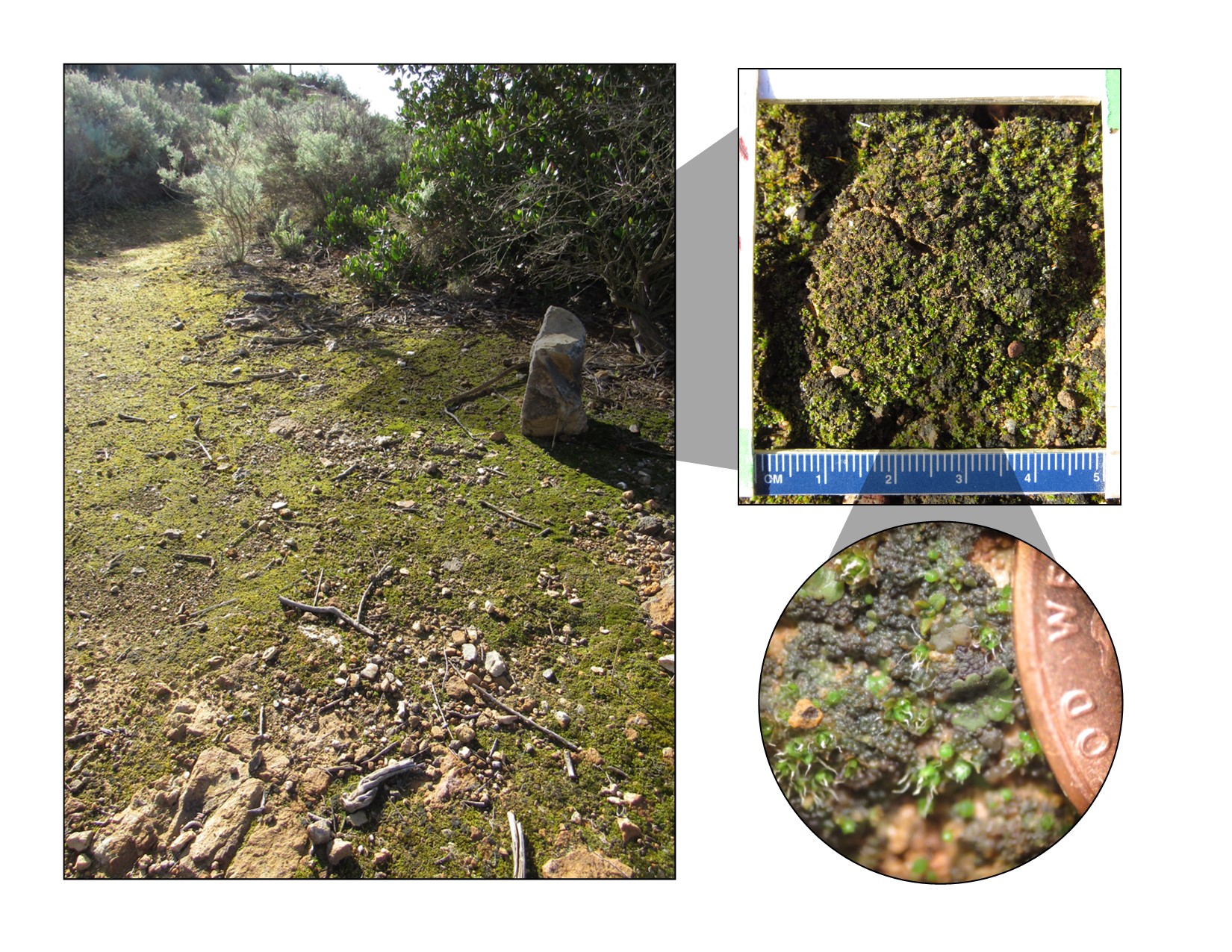
Ground view of hydrated late successional BSC on the PVP.
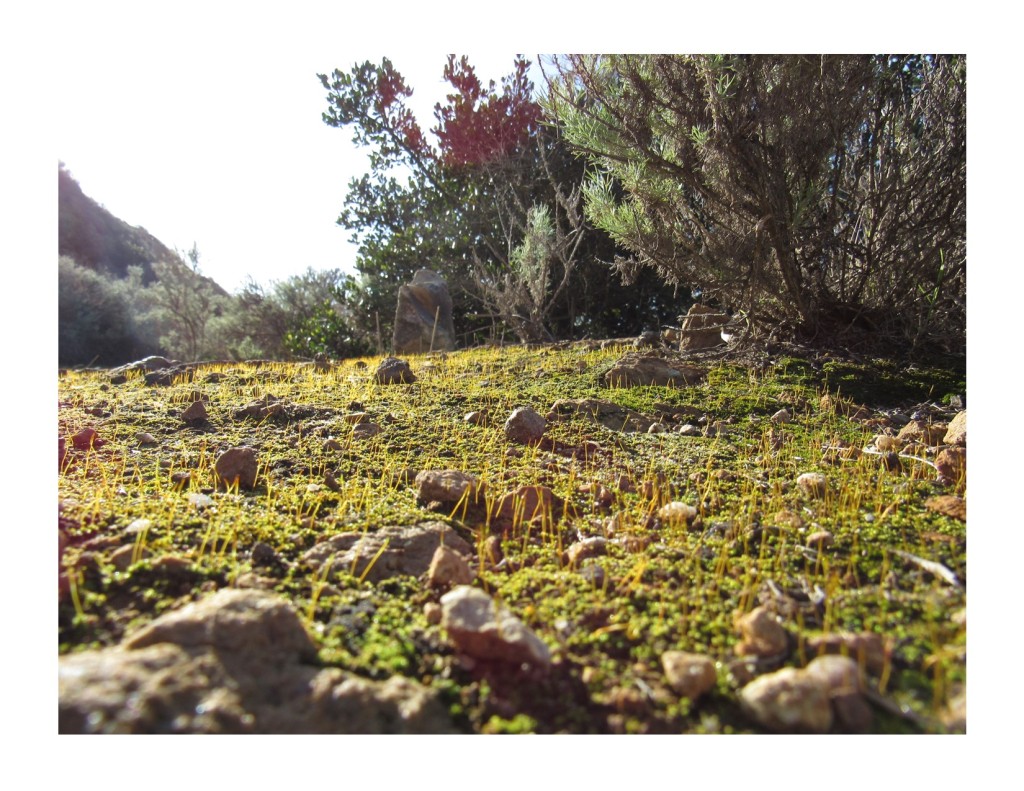
Dormant late successional BSC on the PVP (showing the rugose morphology).
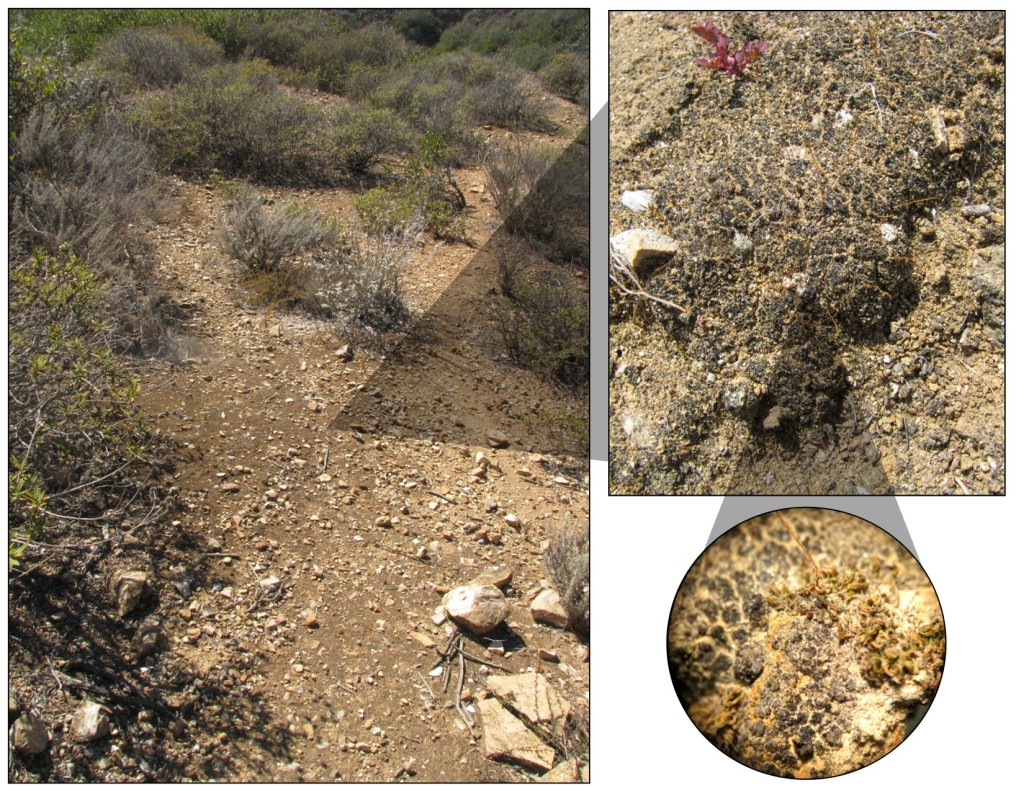
Dormant early successional BSC on the PVP. Early successional BSC on the PVP consists primarily of cyanobacteria (Microcoleus sp., Nostoc sp.) and some ruderal moss species (Vinealobryum vineale, Bryum argenteum, Funaria hygrometrica). This early successional BSC is commonly seen in disturbed sites.
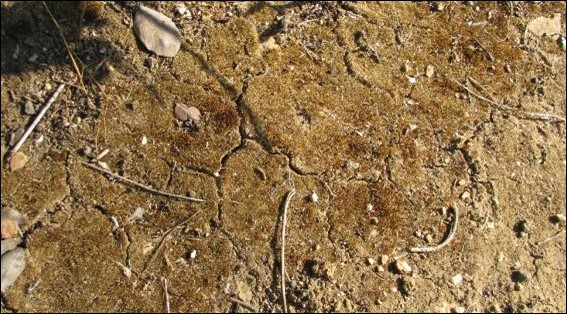
Some lichens observed in late successional BSC on the PVP (dormant to hydrated). Possibly Toninia sp. (1), possibly Collema sp. (2), and possibly Placidium sp. (3).
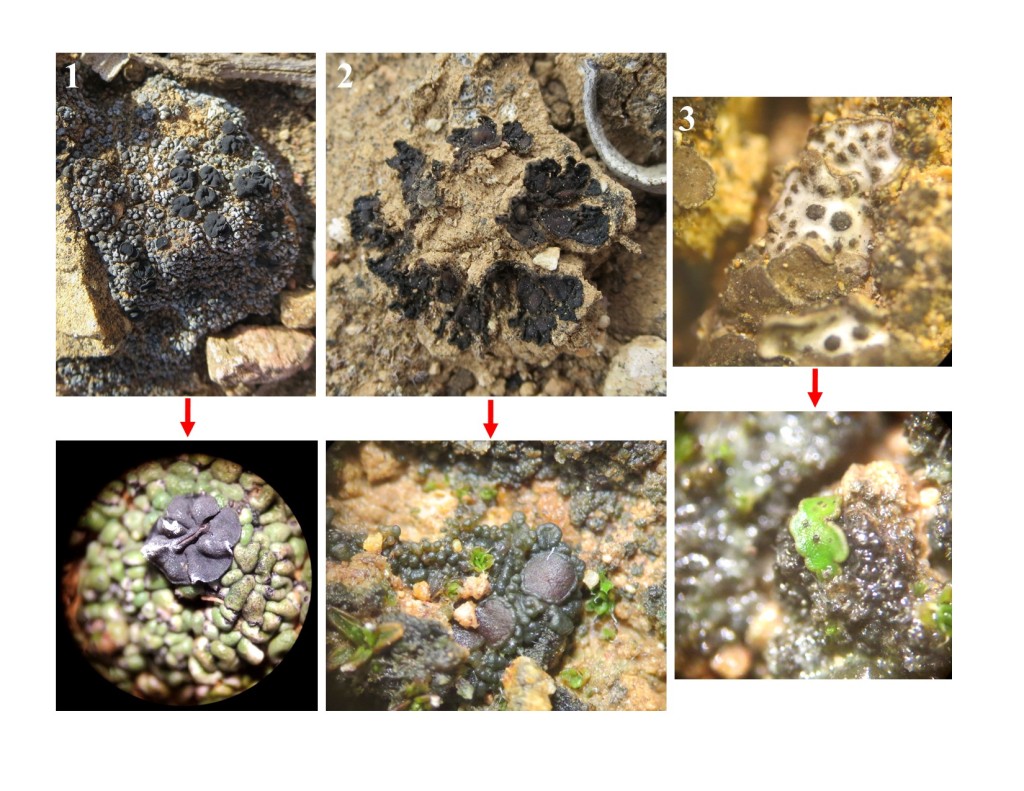
Mosses found in late successional BSC on the PVP.
Aloina bifrons (1), Aloina aloides var. ambigua (2), Trichostomopsis australasiae, Vinealobryum brachyphyllus (4), Tortula inermis (5), Tortula brevipes (6)
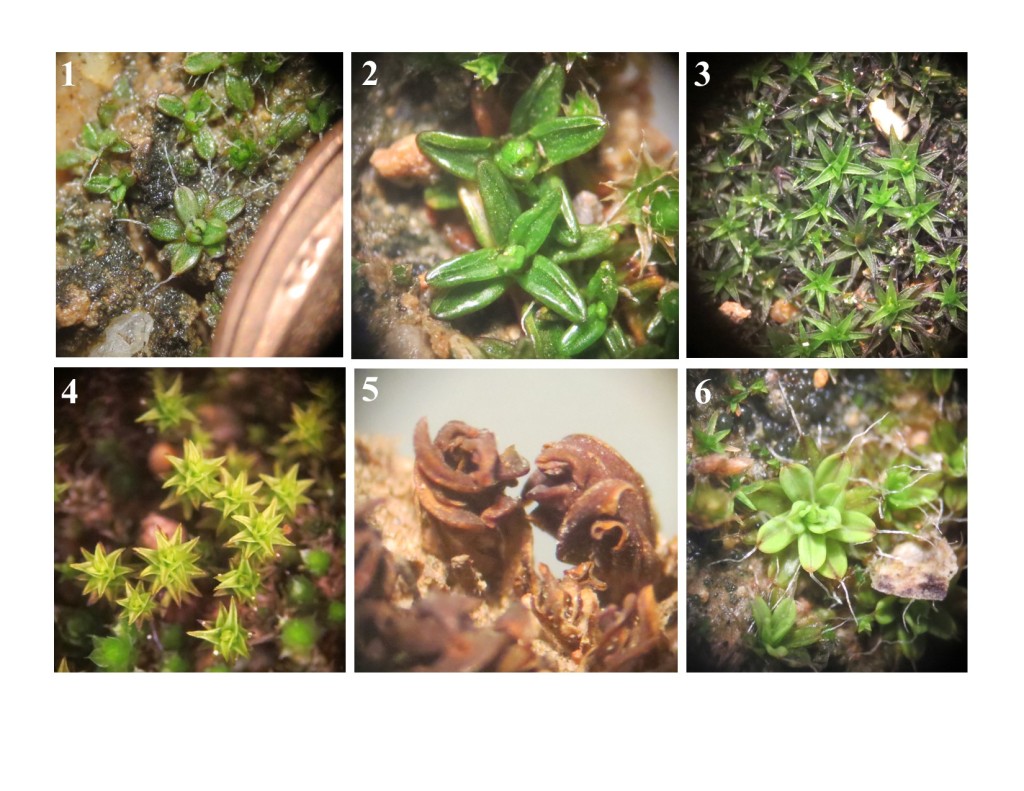
Vinealobryum vineale (7), Crossidium squamiferium (8), Tortula californica (9), Funaria hygrometrica (10), Bryum argenteum (11), Gemmabryum radiculosum (12)
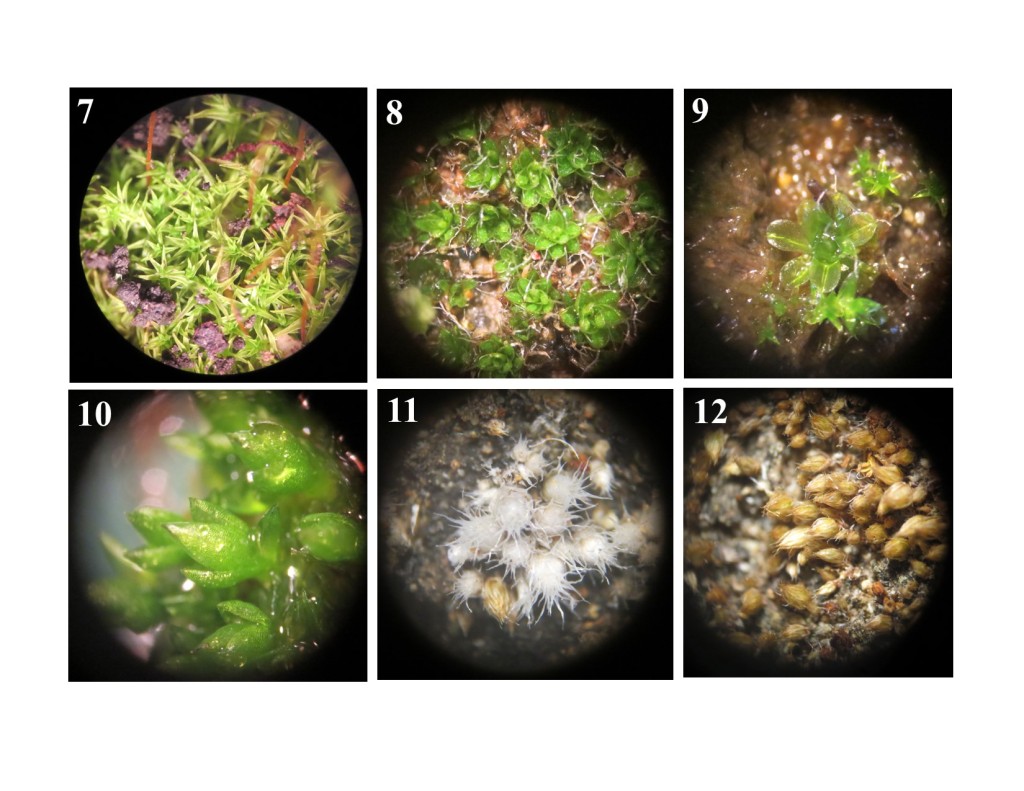
Early successional BSCs are formed when bare soils of semiarid and arid ecosystems are colonized by non-heterocystous filamentous cyanobacteria. These non-heterocystous filamentous cyanobacteria can secrete an exopolysaccharide sheath around groups of trichomes (rows of bacterial cells that are in close contact with one another over a large area), forming supracellular rope-like structures called bundles that can attach to soil particles and stabilize soils. Once soils are stabilized by these non-heterocystous filamentous cyanobacteria, other organisms such as algae, lichens, and bryophytes can begin to colonize BSCs and further stabilize the soil.
Filamentous cyanobacteria in BSC on the PVP (possibly Microcoleus vaginatus).
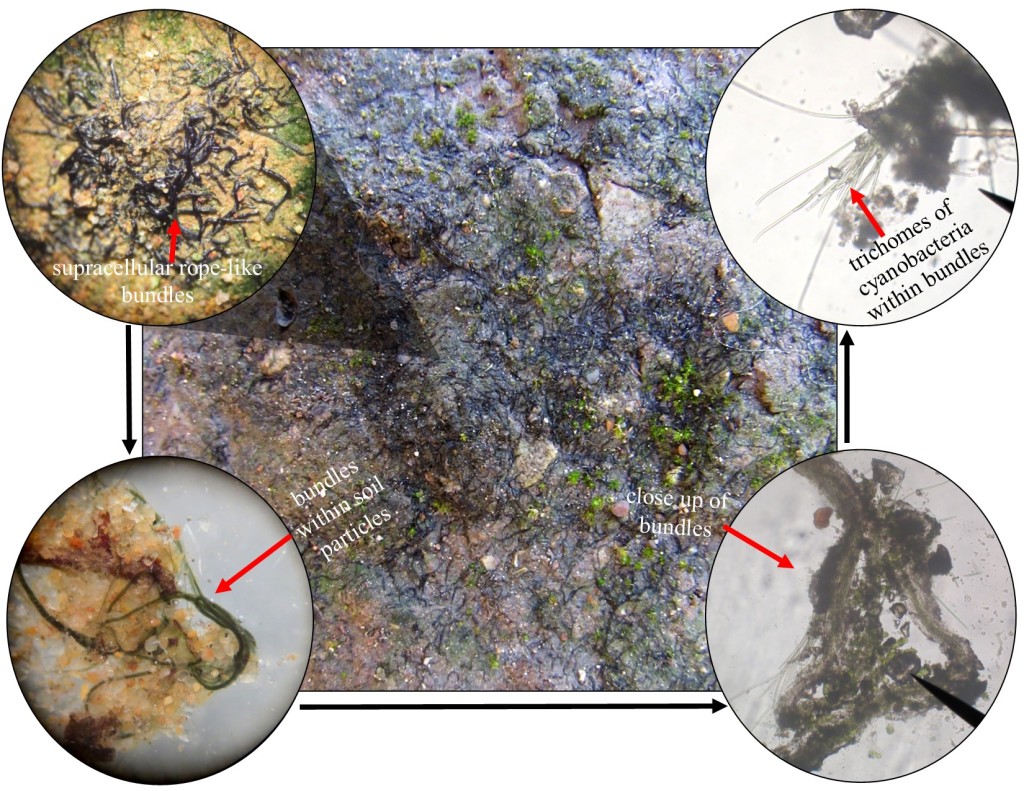
Another cyanobacterium in BSC on the PVP is Nostoc (possibly Nostoc commune), which forms gelatinous “balls” on the soil surface. Each gelatinous ball is composed of an aggregation of numerous filaments of cyanobacteria.
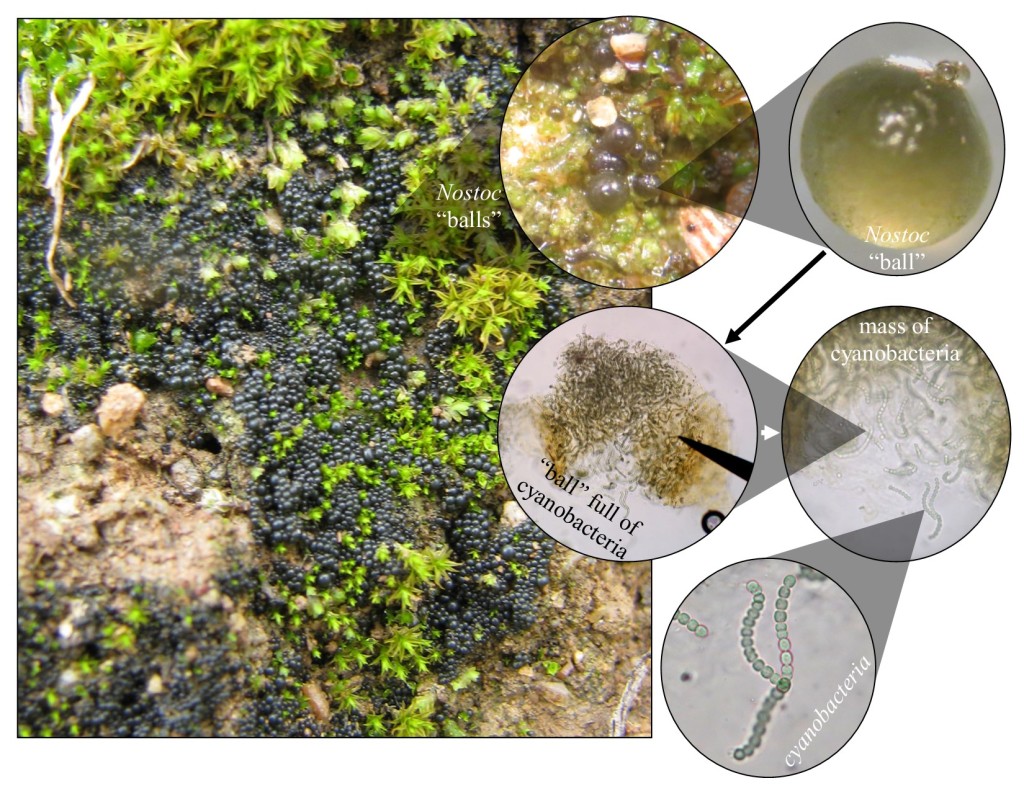
Additional pictures of BSC from the PVP.
